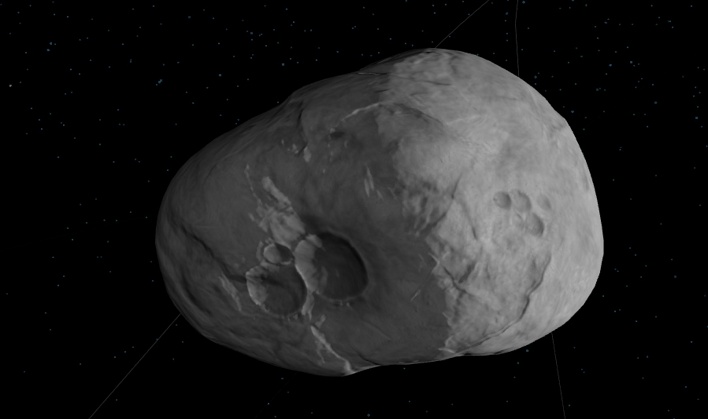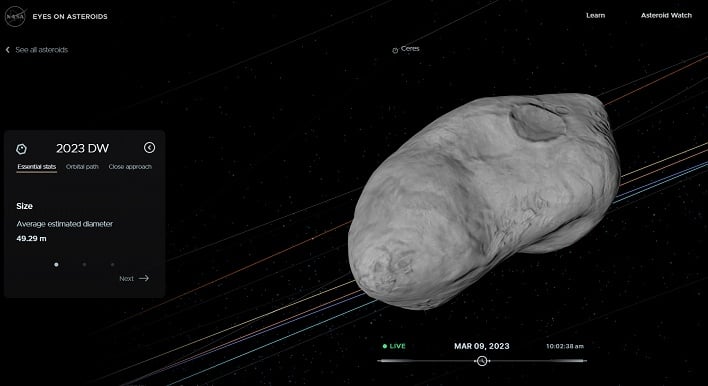NASA Is Tracking A Swimming Pool-Sized Asteroid With Startling Odds To Smash Into Earth

NASA Asteroid Watch's Twitter account tweeted out about the asteroid earlier this week, stating that it has been tracking the new asteroid, named 2023 DW. While the 1 in 600 odds may sound perilously high, NASA says it is still a "very small chance" of impact." 2023 DW was first detected on February 27, 2023, and is estimated to measure approximately 165 feet (50 meters) in diameter, or roughly the size of an Olympic-sized swimming pool.
"Often when new objects are first discovered, it takes several weeks of data to reduce the uncertainties and adequately predict their orbits years into the future," NASA remarked in its Tweet. "Orbit analysis will continue to monitor asteroid 2023 DW and update predictions as more data comes in."
Even if the asteroid made an impact on Earth, it would not be a cataclysmic event. However, it could still cause a large amount of damage if it were to impact near a major city or heavily populated area. An example would be the asteroid that exploded over Chelyabinsk Russia in 2013. That asteroid produced a shockwave that caused damage to thousands of buildings and injured about 1,500 people.
NASA has been working hard on developing techniques to protect Earth against an asteroid impact in the future. Its Double Asteroid Redirection Test (DART) mission successfully impacted and changed the trajectory of a small asteroid. As of right now, there are no known asteroids that pose a risk to Earth.
For those that would like to keep track of asteroid DW 2023, it can be tracked live via the Eyes on Asteroids website. Along with a live view of where the space rock is at any given moment, there are also essential stats and information on its orbital path and close approach available.



